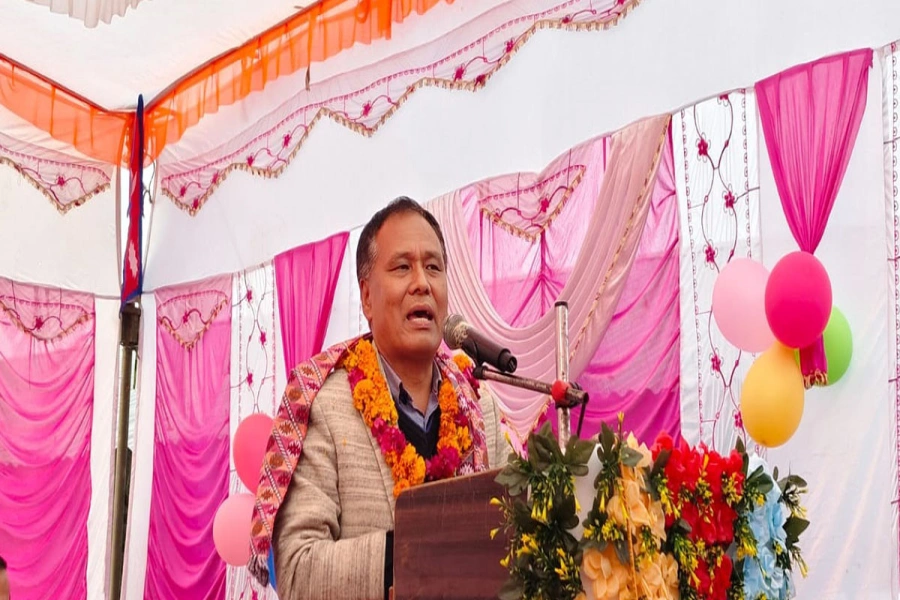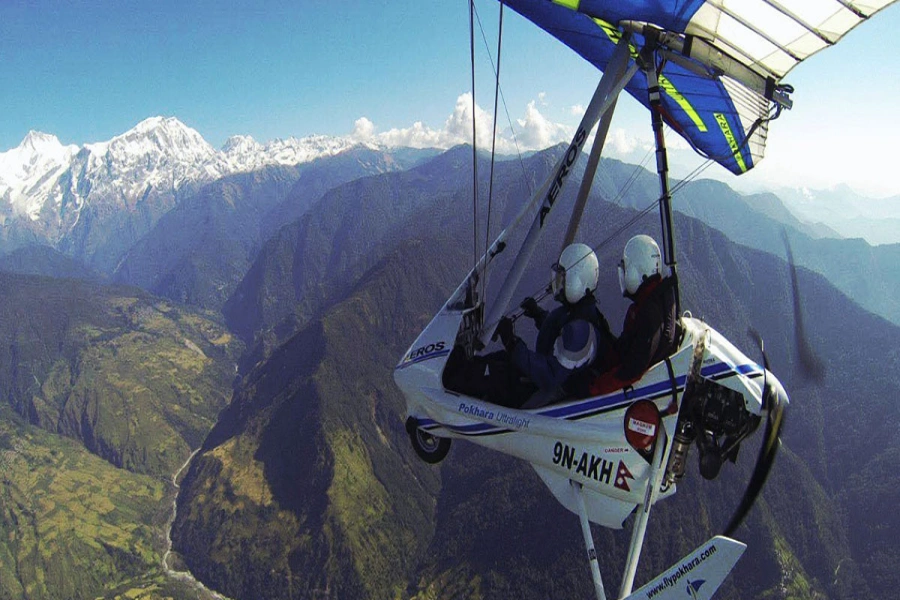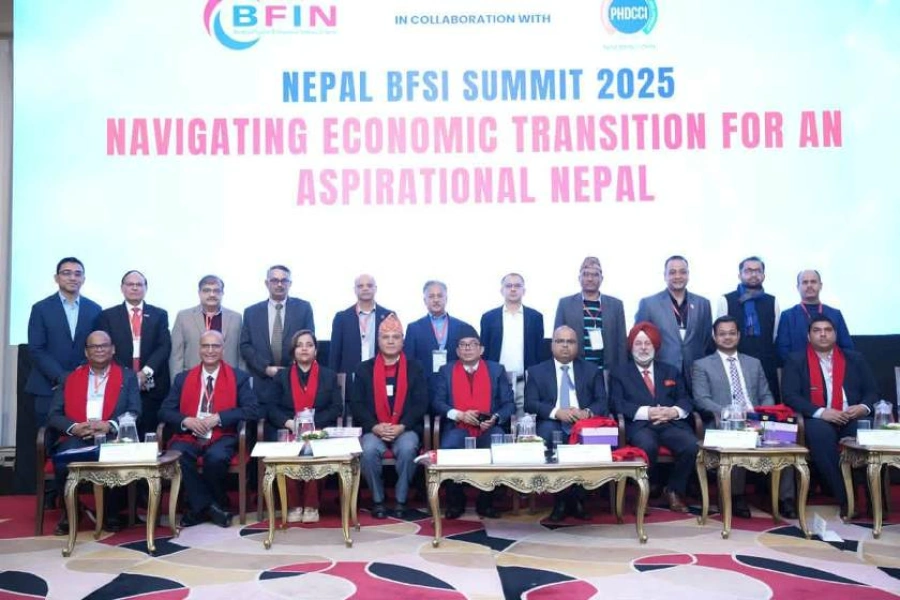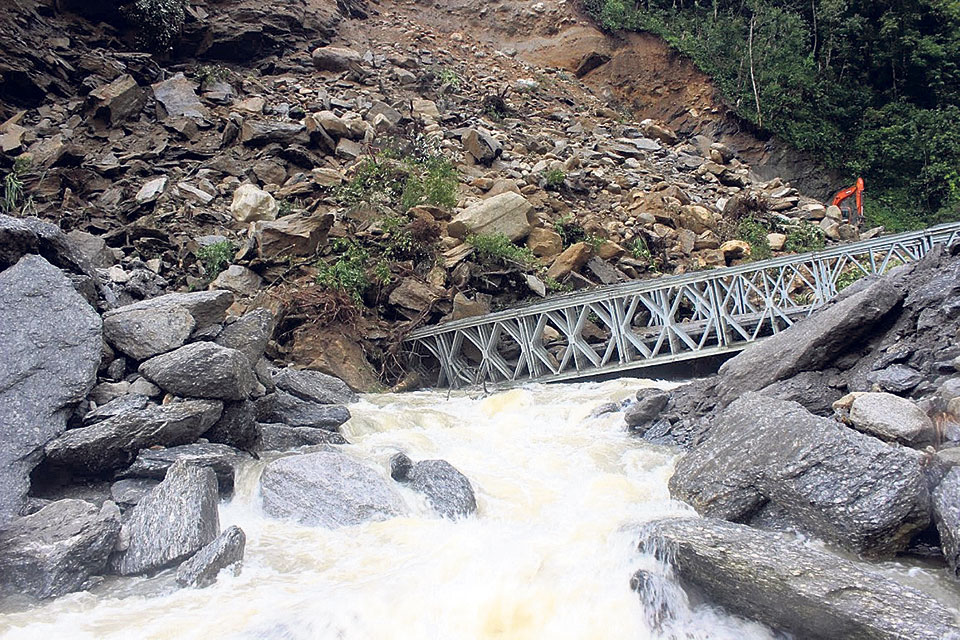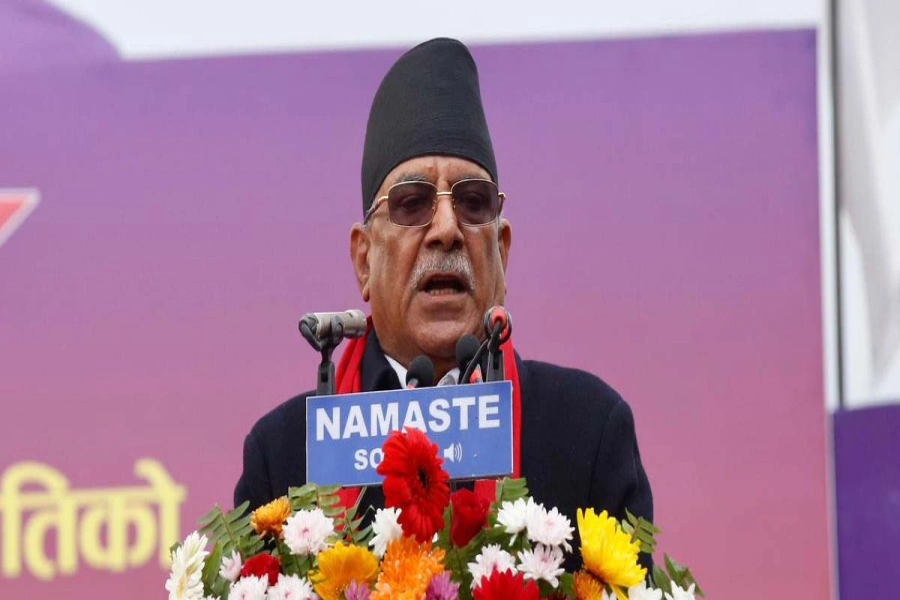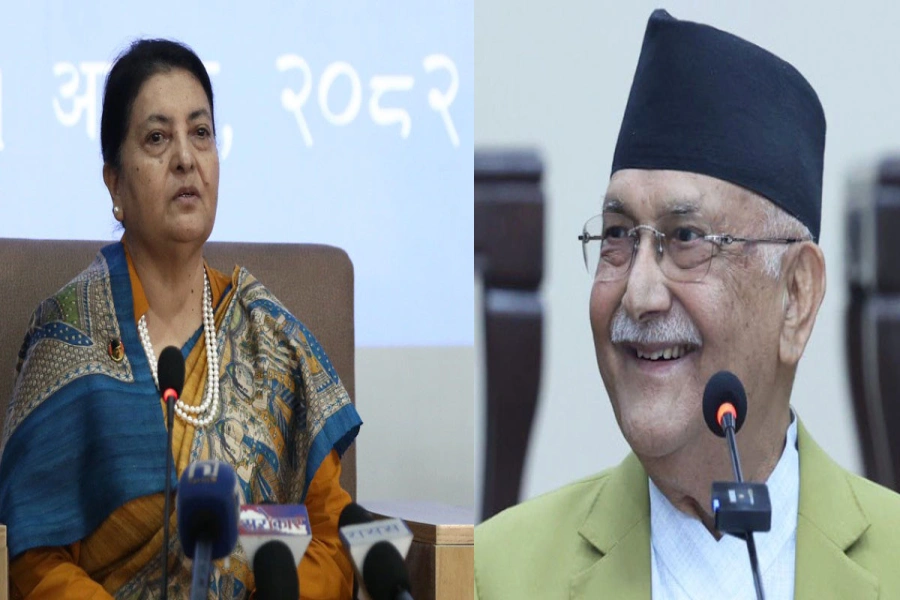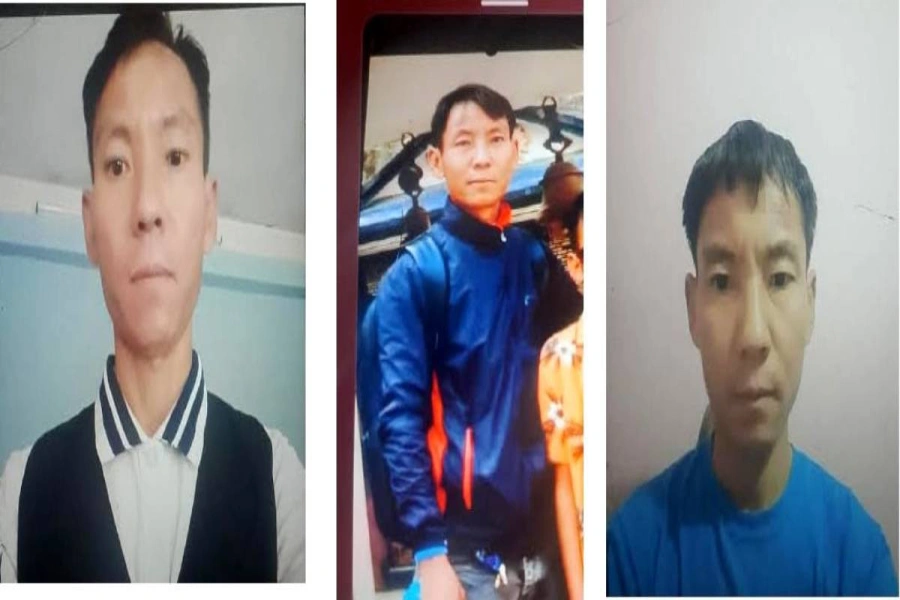The debacle of Arun III has a lesson: Project preparation and investment for the scale of Arun III takes many years of time, money and effort but it takes a few months of activism to destroy it
Perhaps no single development issue attracted as much attention, controversy and debate in the early nineties as the Arun III Hydro Project, located on the Arun River in Sankhuwasabha district. This project was identified by a JICA reconnaissance study in the Koshi basin, and screened further on the basis of energy capacity, distance from the load centre, accessibility, and rough cost benefit analysis. As one of the four attractive projects identified by JICA, it was subsequently studied up to the pre-feasibility level. In 1987, a Least Cost Generation Expansion Plan (LCGEP) was prepared with the help of Canadian International Water and Energy Consultants, based on an inventory of projects studied up to the pre feasibility level. The Plan had concluded that the most economic generation sequence to meet the forecasted demand through 2005 would be a combination of load management, thermal power, and a two stage Arun III project. The study had considered various options, including both thermal and hydro projects ranging in size from 10 MW Modi to 660 MW Kaligandaki 2 and an update of LCGEP in 1990 had reconfirmed that Arun III was part of the least cost plan. The total generation capacity of the project was 404 MW of electricity.
About the Project
The government of Nepali Congress took over in mid-1991, and Arun III was already developed as an essential part of Nepal’s least cost energy plan for the medium term. In response to the concerns about macro-economic affordability, this project was redesigned in 1992 as a two-stage project of 201 MW each; this again being reconfirmed as part of the least cost plan in 1994. Unlike other projects developed and identified for the future that generated very low firm energy, ranging from 15 to 60 percent of the installed capacity in lean seasons, Arun III provided about 85 percent of the firm installed capacity even in the dry season of December-April.
The total estimated cost of the project, as of 1994, was US $ 1.08 billion, of which about two-thirds was committed by external agencies, entirely in the form of grants and soft loans. The principal donors included the IDA ($175 million), ADB ($127 million), Germany ($125.4 million), Japan ($150 million), and France, Switzerland and Finland ($ 46 million). Of the main sources, the German assistance was an outright grant. The Japanese had committed soft loans convertible into grants and the World Bank and ADB loans represented soft credit payable over a period of 30-40 years at less than one percent service charge. Others were grant-cum-credit. A rough calculation showed that the foreign assistance package had a seventy percent subsidy element in it and the annual power generation from the project at the prevailing power tariff at that time would yield approximately five billion rupees. The debt servicing obligation and operational costs of the project would take about one fifth of this revenue, leaving approximately four billion rupees as net revenue to the government for investment in other priority sectors. One important component of the project was the 122-kilometre access road to be completed at the cost of $ 124 million.
The Nepali Congress government supported and approved the project after being satisfied with its attractiveness. This was further reconfirmed after being subjected to rigorous appraisal and scrutiny at various levels from technical, economic, environmental, social, and regional considerations by national and international experts. The country had already spent US $20 million for pre-feasibility, feasibility, and the engineering designs.
Dozens of public hearings and consultations were conducted at the national level and with local bodies, user groups, and other stakeholders including the inhabitants of the project-affected areas. The support was enthusiastic, particularly from the affected areas where roads were expected to bring benefits to the local population.
Controversy and cancellation
Unfortunately, the project attracted unprecedented debate and controversy both within and outside the country by a powerful network of international non-governmental organizations. The opposition, instigated by business interests and the thermal lobby, was natural. However, the staunchest anti-Arun campaign was launched by international NGOs and their local counterparts in various financial capitals including Washington DC, Manila, Tokyo, and Bonn. Some of the lead international NGOs opposing this project were UK and USA-based International Rivers Network, International Technology Development Group, the Globe International, Greenpeace and Environment Defense Fund and Friends of the Earth. Prominent Nepali NGOs which opposed the project included Alliance for Energy, INHURED International, and Arun Concerned Group.
The controversy took a political turn when the Communist Party of Nepal criticized the GP Koirala-led Nepali Congress government for promoting the project without creating a national consensus and studying alternative scenarios. They were also suspicious of the role of ‘commission money’ behind the project. The National Planning Commission (NPC) became the target of much criticism for pursuing a wrong ‘mega projects’ policy in the hydro sector, and negotiating this ‘expensive project’. In a haste to find faults in our approach, facts were mixed with fiction, till their distinction reached its climax when the General Secretary of Nepal Communist Party (UML) Madhav Kumar Nepal wrote a letter on October 18, 1994 to the World Bank President expressing “serious reservations about the way the project has been designed and proposed”. He also wrote that he would undertake a fresh review of the cost-benefit and the environmental side of the project before taking any final decision “if elected to form a new government in Nepal.” The letter also questioned the mandate of the then ‘caretaker’ government to make a decision on such a vital project. The timing of this letter could not have been more critical as Nepal was preparing for mid-term elections and the World Bank Board was scheduled to give final approval to the project on November 3, 1994.
It is absurd that the letter mentioned a lack of project debate in Nepal’s parliament, and challenged the competence of the ‘caretaker’ government to take a decision. Both these assertions were at variance with the truth. First, the project was debated in the parliament based on the motion of public importance tabled by a prominent UML leader. Second, the question of the competence of a ‘caretaker government’ was not valid, since the project had already been negotiated and processed by the full-fledged cabinet before the announcement of the election. The only formality remaining was the approval by the World Bank Board of Directors. Naturally, the World Bank took the content of the letter seriously, as it came from the leader of the major opposition party which stood a chance of winning the election. Consequently, it deferred the final project decision on the project.
PTC India to buy electricity generated from Arun-III

The mid-term elections in November produced a hung parliament with no party winning majority seats. The CPN (UML) which emerged as the single largest party and the anti-Arun campaign was gaining strength. A new management had assumed office in the World Bank and they did not share the same commitment to the project as their predecessors. Sensing the seriousness of this problem, this author, as a member of Opposition, tabled a Motion of Public Importance in the House of Representatives demanding the immediate government decision on the project.
I warned that any delay to take a decision could lead to the loss of the project, on which the nation had invested so much energy, resources, and time. The debate on the motion continued until late night with unprecedented participation. All party leaders, including some members of the ruling party, spoke in favor of an immediate decision. The response from the Minister of Water Resources was non-committal, raising several questions about the design and cost of the project, which he said “needed to be sorted out” before any decision was made. Subsequently, the Minister dashed to Washington DC, naively believing that he could reduce the project cost by redesigning a project which was already processed for final formal approval. The project had already been subjected to thorough scrutiny from all possible angles by the best possible professionals.
The World Bank was not convinced of the government’s commitment to the project. On August 3, 1995, the new World Bank President James Wolfensohn cancelled the project “in agreement with the Government of Nepal”. Referring to his telephone conversation with Prime Minister Manmohan Adhikari, he said priority would now be given in “devising and implementing alternative strategy of meeting its needs for electric power.’ In cancelling the project, the President gave three reasons: concern regarding Nepal’s management capability to meet the demands and long list of actions which the project of this size and complexity would involve, difficulty in gaining popular support in implementing a number of measures including power tariff and prioritization of public expenditure and difficulty in mobilizing additional $30-40 million cost overrun as a result of the delay in project implementation.
These arguments were not very convincing. The first two concerns were raised many times before, and were fully addressed. The Inspection Panel which the Bank had set up to review the social and environmental questions raised by NGOs found no fault in the way the project was designed. The President had cancelled the project without even discussing it with the Board of Directors, where other co-financing partners would have presented their respective positions. In fact, some of the concerned financing partners were surprised at the World Bank’s decision. It was particularly surprising since it had championed this project for about a decade. In this way, the Bank had virtually led the country to a ‘no option trap’.
Immediate fallout of the project was the joy and celebration by the anti-Arun NGOs. The World Bank management had been the target of attack of this group for promoting ‘destructive megaprojects’ and its new President who came from an investment banking background. The President’s decision pleased this group and his acceptability with them was established. It is sad that even Joseph Woods, a World Bank Vice President who had worked hard to promote this project, fell in line with the new management’s approach. He said that “the signal we would send out is that the Bank no longer supports infrastructure projects like this.” Ironically, just a few months after this decision the World Bank approved a mammoth 1450-MW Ghazi-Barotha hydroelectric project in Pakistan and a 11-km Jamuna Bridge in Bangladesh. This only indicates how a small and poor country tends to fall victim to the changing approach of mega institutions influenced by a network of interest-groups.
Allegations Vs Facts
The first criticism was that Arun III was a huge project costing more than Nepal’s annual budget. It was alleged that Nepal did not have the management capacity to implement such big projects and only big international contractors and their local commission agents would prosper. It would crowd out small scale projects and Nepal would not be allowed to promote project above 10 MW after accepting Arun III. Therefore, an alternative approach was necessary with an emphasis on small projects to be implemented by indigenous capacity.
Second, it was pointed out that this project would cost $3,800 per installed KW whereas private companies could produce power at half that price. The project would make the power tariff unaffordable and the loan component of the project would impose a huge debt servicing burden on the economy.
Third, the project would have adverse effects on natural resources such as land, forests, fisheries, and the socio-cultural environment of the Arun basin where 450,000 population of 10 ethnic groups lived. Comparisons were made with the controversial Narmada project of India.
Small Vs Big Debate
The charge that Arun III’s cost was equivalent to one year’s national budget did not make economic sense, since the project expenditure was spread over eight years and it did not crowd out other priority development activities. The allegation that the Nepali Congress government favored only big projects was equally invalid since one of the important policy departures made by the National Planning Commission in the early nineties was the emphasis given to the micro sector, particularly in energy generation, irrigation, roads, and similar development projects. Programs were formulated to implement small hydro and other similar schemes for districts which had no access to electricity.
The proponents of the alternative approach had proposed to transfer the planned Arun III funds for the construction of 10 different smaller scale projects to spread the risk. This looked fine in principle, but experience showed that the process of developing alternative hydropower projects is far more difficult and time consuming. They take a long time for investigation, feasibility, detailed engineering, financial mobilization, and subsequently implementation.
Many investors visited Nepal with investment proposals, provided the government would assure them of the required amount of energy. The historical electricity sales curve also showed big sales growth in years when major hydro projects were commissioned. Therefore, the challenge for policy makers and planners is developing projects of all sizes and from all sources—private, public, internal and external. Without such an approach, meeting the ever increasing electricity demand would not be possible, let alone for export and making it an engine for growth.
Debt, power tariff and cost
The allegation that the project would impose a huge debt burden on the economy was false as even skeptics accepted that the most attractive feature of Arun III was its financial package. Over half of the external assistance was in the form of grants. The remaining debt portion was of a concessional nature, carrying around one percent interest rate and payable over 40 years, with a grace period of an additional 10 years. The project would have generated a minimum of five billion rupees ($100 million) annual revenue at the prevailing tariff at that time. At the present rate it would be about eight billion.
Not more than 20 percent of the revenue generated by the project would have gone to service debt, the rest being available for investment in other priority areas such as poverty alleviation, rural development, education and health. Out of all the investment projects supported with external credit in Nepal, it is only the investments in hydro power and telecommunications that has generated revenue sufficient not only to service debt, but also produced large amount of ‘social profit’ for government investment.
In fact, of all the projects studied until then, Arun offered the cheapest firm energy, that is at the rate of 5.94 cents per kw/hr. If one takes into account only the cost of the project to the national economy, the production cost of both firm and average energy by Arun III would have been less than 2 US cent per kw/hr. We did not come across any firm proposal which would generate power at a cost even remotely close to this figure.
Criticisms were made that implementation of projects such as Arun could lead to concentration of wealth in a few hands, as it would enrich big contractors and commission agents. But it would be impractical to stop a road or irrigation or a power project simply because some contractors, agents, or businessman could benefit from them. If there is international capital coming from agencies like the World Bank or the Asian Development Bank, one has to accept international competitive bidding to the member countries for major contractual and procurement works. Under bilaterally-funded projects, contractors from the concerned donor countries will get the contract. If we do not accept such conditions, the recipient countries are free to choose a different type of financing model, and forget about foreign assistance.
Exaggerated Environmental Issues
Some critics abroad were bent on exaggerating the environmental and cultural damage from this project. Comparisons were often made with the controversial Narmada Dam of India without considering the fundamentally different natures of the two projects. A group of Western NGOs said: The threatened area is one of the last virgin forests in the Himalayas. The road would endanger a proposed national park, the Milke Danda area, as well as the Hurure-Chilchia cloud forest. Three sal forests would also be at risk, the dam will destroy fisheries, 21 bird, 42 plant and 13 fish species, endangering plants, mammals, butterflies, reptiles and so on.
To compare Arun III with the Narmada Dam, which involved the construction of a huge reservoir displacing a population of about 67,000 largely indigenous tribes and submerging approximately 11,000 ha of forest land, was simply ridiculous. The project had the Regional Action Plan and Environmental Mitigation Program with a total budget of US $ 18.6 million to mitigate the negative impacts on the environment. Adequate provisions were also made for forest conservation, environmental mitigation, and preservation of biodiversity, religious monuments, artifacts, and the development of micro hydro and rural roads.
A national loss
Arun III was lost and with it the attractive financial package whose benefits included the huge social profit potential to boost the national revenue also vanished. The Eastern Development Region has been prevented from precious developmental opportunities which the multiplier effects of this project would have created. The dream of the poor people of the Arun Valley—who are forced to bear the pain of carrying bags of salt, fertilizer, and other essentials for several days—to have a road to ease their drudgery was dashed.
It may be a long while before the project is brought back for implementation. The internal capacity to develop the project does not exist and the possibility for availing grants and soft loan packages is extremely remote. Accessing concessional loans for a capital investment project of a commercial nature like electricity will be increasingly difficult in the coming days. It is also estimated that about a trillion dollars will be required for financing the power sector expansion plans of low income countries during this decade. As the international financial institutions are unable to meet this requirement with soft loans, alternative sources including the commercial loans and private capital will have to be mobilized under harder terms and with higher repatriation of dividends and debt servicing requirements. Even this does not seem remotely possible under the country’s present investment climate and in the absence of access road in place. Even in the unlikely scenario of getting the capital investment, the project cost will be several times higher.
The naïve belief that the funds committed for Arun III could be transferred to an alternative approach did not materialize. The World Bank had promised to fund an alternative power generation plan, but in the last eight years after the cancellation of Arun, not a single project of power generation was supported by this institution.
An umbrella project called Power Development Fund with IDA credit of US $75 million (compared to $ 175 million committed to Arun III) was recently approved with the objective of supporting private sector projects. But its implementation is yet to take off. Thanks to the then government’s foresight in promoting the Kaligandaki A, the country did not go dark. The Asian Development Bank and the government of Japan were successfully persuaded to jointly support this project. This support was irrespective and independent of Arun III and therefore there was no transfer of funds committed to Arun. Only the funds committed to Arun III by Germany was transferred to Mid-Marshyangdi Hydro Project that too after a lot of persuasion.
One positive development in the last decade has been the development of private sector power generation. But the foreign exchange implications and other unfavorable aspects in the power purchase agreement due to poor negotiations have caused a tremendous financial burden on the NEA. The total sales proceeds from the power procured from the private producers is less than what the NEA pays as the procurement price. The NEA is obliged to buy all power produced from these schemes irrespective of their marketabilty, particularly in the surplus season. The NEA loses approximately a billion rupees annually on this account.
The debacle of Arun III has a lesson, if only we are prepared to learn it. Project preparation and investment for the scale of Arun III takes many years of time, money, and effort, even when goodwill and congenial atmosphere for development assistance prevail. But it takes a few months of determined activism to destroy it in this world of instant global communications. Opposition to such project can always be expected from the global network of organizations for ideological and other reasons, but when national policy makers themselves fall prey to wrong and motivated advice, the nation suffers. Once undone, recovery cannot happen early and easily.
The author is former Finance Minister of Nepal. The article is an edited version of the case study of the author published by University of New Mexico




